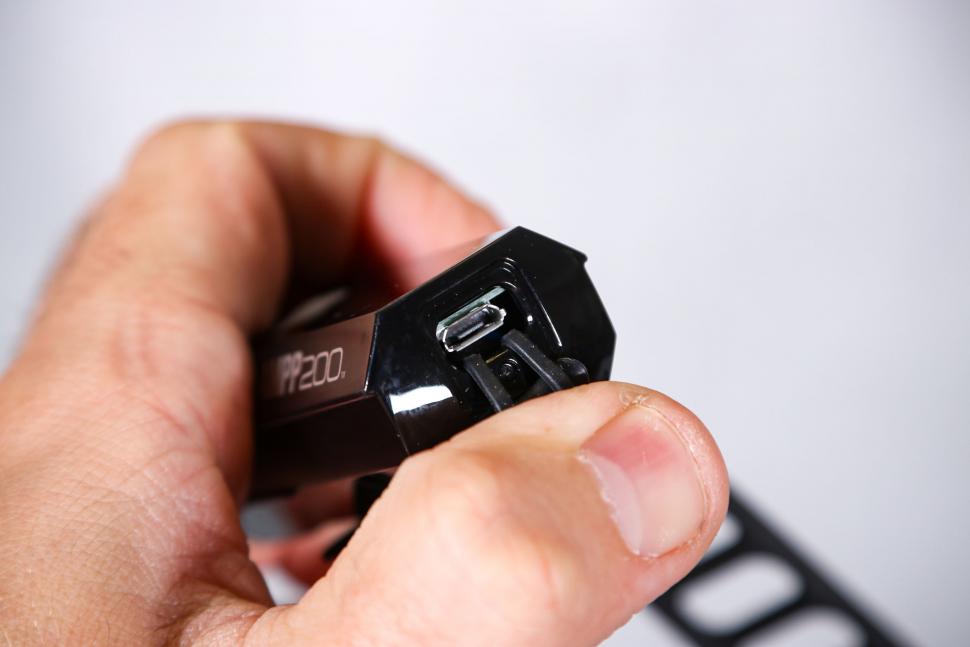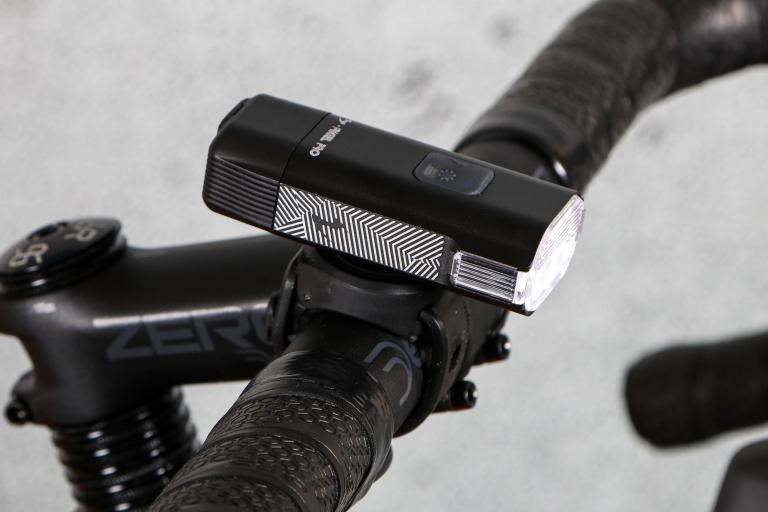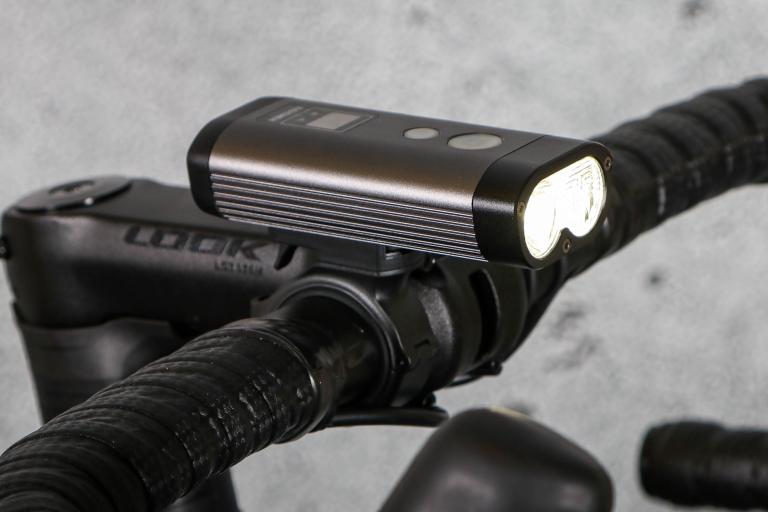- News
- Reviews
- Bikes
- Accessories
- Accessories - misc
- Computer mounts
- Bags
- Bar ends
- Bike bags & cases
- Bottle cages
- Bottles
- Cameras
- Car racks
- Child seats
- Computers
- Glasses
- GPS units
- Helmets
- Lights - front
- Lights - rear
- Lights - sets
- Locks
- Mirrors
- Mudguards
- Racks
- Pumps & CO2 inflators
- Puncture kits
- Reflectives
- Smart watches
- Stands and racks
- Trailers
- Clothing
- Components
- Bar tape & grips
- Bottom brackets
- Brake & gear cables
- Brake & STI levers
- Brake pads & spares
- Brakes
- Cassettes & freewheels
- Chains
- Chainsets & chainrings
- Derailleurs - front
- Derailleurs - rear
- Forks
- Gear levers & shifters
- Groupsets
- Handlebars & extensions
- Headsets
- Hubs
- Inner tubes
- Pedals
- Quick releases & skewers
- Saddles
- Seatposts
- Stems
- Wheels
- Tyres
- Health, fitness and nutrition
- Tools and workshop
- Miscellaneous
- Cross country mountain bikes
- Tubeless valves
- Buyers Guides
- Features
- Forum
- Recommends
- Podcast
review
 2022 Cateye AMPP 200.jpg
2022 Cateye AMPP 200.jpg£24.99
VERDICT:
Compact, light and simple to use, plus you don't have to scroll through flash mode – bonus!
Enough power to see by
Multiple fitment options
Cheap as chips
Narrow 'spot' beam
Weight:
62g
Contact:
At road.cc every product is thoroughly tested for as long as it takes to get a proper insight into how well it works. Our reviewers are experienced cyclists that we trust to be objective. While we strive to ensure that opinions expressed are backed up by facts, reviews are by their nature an informed opinion, not a definitive verdict. We don't intentionally try to break anything (except locks) but we do try to look for weak points in any design. The overall score is not just an average of the other scores: it reflects both a product's function and value – with value determined by how a product compares with items of similar spec, quality, and price.
What the road.cc scores meanGood scores are more common than bad, because fortunately good products are more common than bad.
- Exceptional
- Excellent
- Very Good
- Good
- Quite good
- Average
- Not so good
- Poor
- Bad
- Appalling
What a cracking little light! The Cateye AMPP 200 is a smart little package that gives you enough light to ride by on main roads, and a flash mode that'll get you noticed for many hours. It's simple to use, well made and can fit almost anywhere.
The 200 is one of the smallest lights in Cateye's AMPP line-up, and it's ideal if you just want a light to see by should you get caught out in the dark, or a compact unit with a bright flash to be seen day or night.
Modes
There are just three modes, high, low and flash, and – check this out – you don't have to scroll through flashing to get back to high! If Cateye can achieve that on a light costing as little as £24.99 (as low as £12.49 online), why can't larger, more expensive lights come with it?
The clear button on the top controls the modes and power, as well as behaving as a battery indicator.
I found two ways to turn it on: a double-click would bring it on in flashing mode, or a long press would bring it on in solid state. It has a memory function, so whether you turn it off in high or low, it will turn back on in that mode.
To switch between the solid modes and flashing, or vice versa, a double click is required, which keeps them separate. If you are in high, a single press will take you to low, another press and you are back to high again.
A long press on the button turns the light off.
As the name suggests, 200 lumens is the highest output, with 1.5 hours of battery life, while low is 40 lumens with a whopping 13 hours' burn-time. Flash is 200 lumens and runs for around 30 hours. A full recharge takes about 2.5 hours.
> road.cc Beam Test: use our big Beam Comparison Engine to help you choose the best front bike light
The beam is very much a spot, a bright centre with a warm glow around the outside. Not perfect for riding, but you can get the light to punch a decent length up the road ahead, and as long as you aren't going too fast (15mph-ish) it gives enough illumination to see where you are going safely. The 40 lumen, not so much, but there is enough light there to get you home should your main light fail.
For more options, front and rear, check out our guide to the best bike lights.
The lens creates a small amount of side visibility, too.
Mount
The AMPP's mount is attached to the light itself, and a rubber band wraps around handlebars measuring from 22mm to 35mm. Its design allows you to spin it by 360 degrees too, so you can mount the Cateye on your stem if you prefer, or even a helmet.
Build-wise, the main body is made from a thermoplastic, ABS, but I'm not going to quibble at this price. It has survived unscathed being chucked in a rucksack and dropped by the kids.
The charge point is covered by a rubber bung, which helps protect it from the elements. Although overall the AMPP only gets an IPX4 rating, which means it can cope with water sprayed from various directions, in real world conditions it handled prolonged rain fine, and the bathroom shower caused no problems.
Value
For the money, I really don't think there is much to complain about with this little light.
The quirky looking Bookman Curve that Lara reviewed last year puts out slightly more light at 220 lumens but for just an hour (2.5 hours on the 100-lumen mode), and it's a tenner more at £34.99.
Lezyne's KTV Drive 200 has a headline output of 200 lumens, but it only achieves that on Dayflash mode. For static you are looking at 70 lumens with a run-time of two hours. That's quite pitiful for the size of the light, and it's three quid more than the AMPP 200.
Conclusion
If you want a small backup light or a flashing light with the option of being used to see where you are going, the Cateye AMPP 200 is a great option. It's well made, easy to use and offers decent battery life too.
Verdict
Compact, light and simple to use, plus you don't have to scroll through flash mode – bonus!
road.cc test report
Make and model: Cateye AMPP 200 Front Light
Size tested: n/a
Tell us what the light is for, and who it's aimed at. What do the manufacturers say about it? How does that compare to your own feelings about it?
It's a simple to use front light with decent battery life.
Cateye says, "200 lumen USB rechargeable light with excellent side visibility. A versatile rubber strap allows for quick and easy attachment/removal from the handlebar."
And lists these features:
Compact rechargeable headlight (200 lm)
Easy to attach and remove, new rubber strap mount
Excellent side visibility
Low battery indicator
USB rechargeable (Micro-USB cable included)
Mode memory function
Three light modes (High / Low / Flashing)
Turns on Flashing mode with double-click of power button
Tell us some more about the technical aspects of the light?
From Cateye:
Dimension: 86 x 35 x 33mm (excluding the rubber strap)
Weight: 62 grams (light unit and battery)
Light source: High intensity white LED X1
Run time: High mode 200 lumens:approx 1.5hrs, Low mode 40 lumens:approx 13hrs, Flashing mode 200 lumens:approx 30hrs
Battery:Li-ion rechargeable battery (3.7V-800mAh)
Recharge time:approx 2.5hrs (0.5A)
Recharge/discharge number of times:about 300 times(until the rated capacity drops to 70%)
Water resistant:IPX4
Other:Low battery indicator, lighting mode memory function
Rate the light for quality of construction:
7/10
Rate the light for design and ease of use. How simple was the light to use?
8/10
Rate the light for the design and usability of the clamping system/s
7/10
Rate the light for waterproofing. How did it stand up to the elements?
8/10
Rate the light for battery life. How long did it last? How long did it take to recharge?
8/10
Rate the light for performance:
7/10
Rate the light for durability:
8/10
Rate the light for weight:
8/10
Rate the light for value:
6/10
Tell us how the light performed overall when used for its designed purpose
Easy to use, and good battery life considering its diminutive size.
Tell us what you particularly liked about the light
No scrolling through flash mode.
Tell us what you particularly disliked about the light
The spot beam can be narrow for some road riding.
How does the price compare to that of similar products in the market, including ones recently tested on road.cc?
It's quite cheap for what you are getting, compared with the opposition.
Did you enjoy using the light? Yes
Would you consider buying the light? Yes
Would you recommend the light to a friend? Yes
Use this box to explain your overall score
The light output is modest, but there are a lot of small design cues found that you don't even get on more expensive powerful lights. Well made, and bright enough to get you out of trouble, it's very good.
About the tester
Age: 44
I usually ride: This month's test bike My best bike is: B'Twin Ultra CF draped in the latest bling test components
I've been riding for: Over 20 years I ride: Every day I would class myself as: Expert
I regularly do the following types of riding: time trialling, commuting, club rides, sportives, fixed/singlespeed,
Since writing his first bike review for road.cc back in early 2009 senior product reviewer Stu has tested more than a thousand pieces of kit, and hundreds of bikes.
With an HND in mechanical engineering and previous roles as a CNC programmer/machinist, draughtsman and development engineer (working in new product design) Stu understands what it takes to bring a product to market. A mix of that knowledge combined with his love of road and gravel cycling puts him in the ideal position to put the latest kit through its paces.
He first made the switch to road cycling in 1999, primarily for fitness, but it didn’t take long for his competitive side to take over which led to around ten years as a time triallist and some pretty decent results. These days though riding is more about escapism, keeping the weight off and just enjoying the fact that he gets to ride the latest technology as part of his day job.
Latest Comments
- David9694 6 hours 9 min ago
Public path across Christchurch civic centre car park could stop sale, claims Friar’s Cliff Residents Association...
- David9694 7 hours 1 min ago
Morrisons supermarket car park cordoned off after car crash https://www.theargus.co.uk/news/25002751.morrisons-supermarket-car-park-...
- Matt Page 7 hours 19 min ago
It sounds like the shoes you have are the Boa L6, and they work well, although the Li2 is better, especially with dual-dial shoes. ...
- Oldfatgit 7 hours 24 min ago
I'm going to admit that I thought that [sic] was an indication of a spelling mistake .. and only after looking it up, I realise that I was *sort*...
- Oldfatgit 7 hours 30 min ago
This is a confusing 'roundabout'...
- AidanR 8 hours 17 min ago
I wouldn't be so sure that he'll get away with this just because cops routinely shoot people and get off. The law is very different as effectively...
- C3a 8 hours 47 min ago
I just did a check on a Carrera Subway 2; currently on sale (£312) - Halford's says out of stock in my size and nothing until July.
- Rendel Harris 9 hours 28 min ago
What he wrote is a direct word for word quote from the King James Bible, one of the very greatest achievements of written English in the history of...
- stonojnr 9 hours 34 min ago
From what I understood from lawyers, there's nothing preventing a charge of manslaughter being applied in addition to death by dangerous driving...
- Dnnnnnn 10 hours 21 min ago
Nocturnal implementation isn't ideal but I think your final sentence captures why it was probably necessary....








Add new comment
1 comments
You could also go with a cracking alternative. The Knog blinder x. Delivers 200 lumens, decent battery life and weighs in at 34 grams.
I do love Cateye's viz 450 rear light. I just wish they made the same up front.